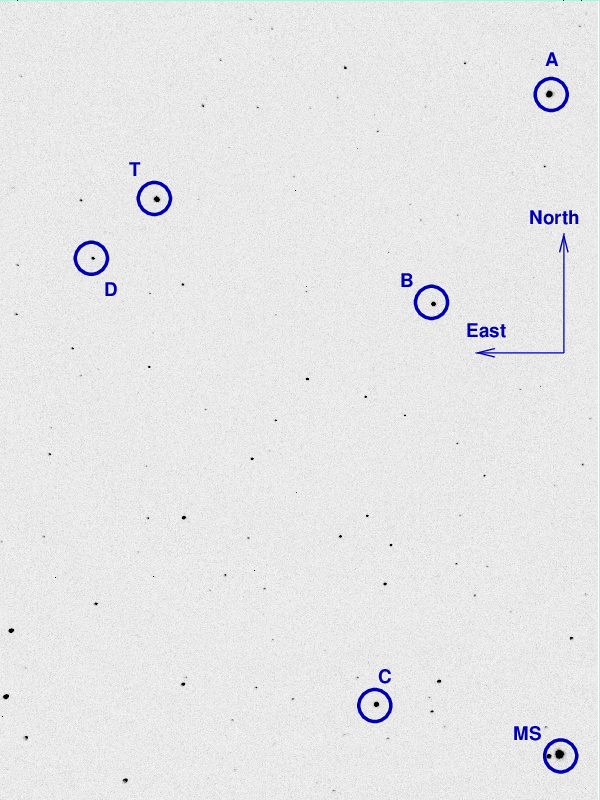
On the night of Sep 03/04, 2025, under good-to-fair conditions, I acquired images of the recurrent nova T CrB. This star undergoes outbursts at long intervals of 80 years or so. Its next outburst is predicted to occur soon (but then again, it was also predicted to occur during 2024), and so I've joined the crowd who are monitoring it.
The star remains quiescent.
I acquired a small number of images of two "ordinary" variable stars, HN Psc and V527 And. One of my capstone students will adopt one of these stars as her target for the semester.
This recurrent nova brightens by about 8 magnitudes (!), from V = 10 to about V = 2, around every 80 years. Will we see another outburst THIS summer?
These observations involved:
Notes from the night:
The picture below shows a cropped image of the field of T CrB from Jun 14/15, 2024. The field of view is about 20 arcminutes across.

I've marked the location of several comparison stars, with magnitudes and names taken from the AAVSO's table X40237AAS. Note that the magnitudes listed for stars "A" and "B" have changed from the ones I listed in last year's notes.
star name B V
------------------------------------------------------
A 000-BJS-901 11.096 10.554
B 000-BBW-805 11.779 11.166
C 000-BPC-198 13.049 12.336
--------------------------------------------------------------------------
When the target is centered, the finder TV shows this field:
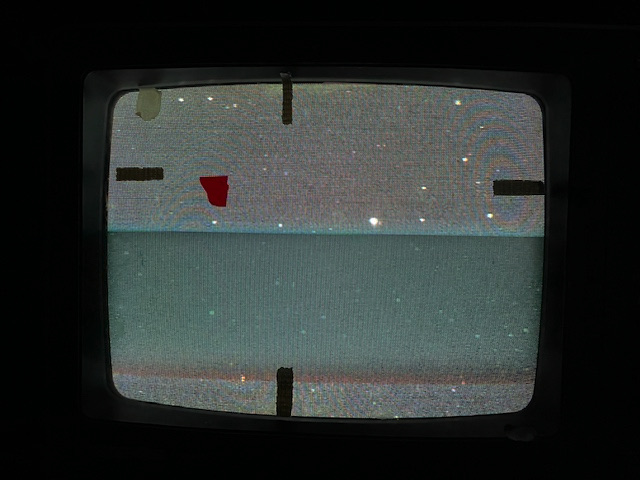
Here's the sky background over the course of the run. There's one short period of thick cloud late, but it clears thereafter.
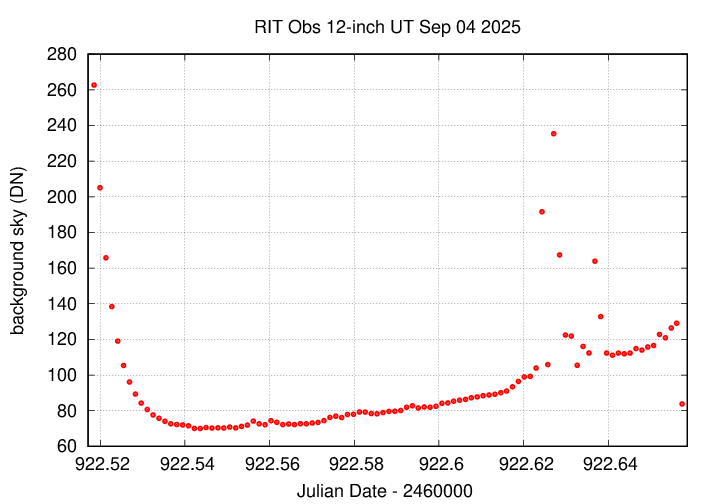
The FWHM increased considerably during the run. I don't know why.
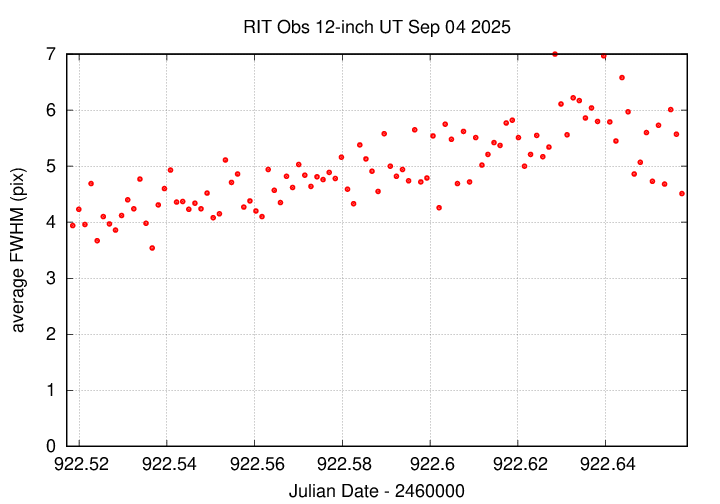
The graph below shows changes in the photometric zeropoint of an ensemble solution of the instrumental magnitudes over the course of the run. I discarded the one very discrepant image before the final photometric solution.
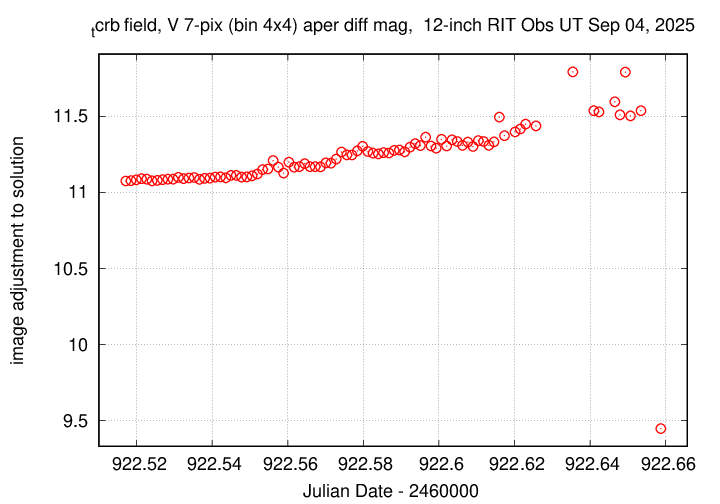
Using aperture photometry with a radius of 7 pixels in V filter (binned 4x4, each pixel is 1.036 arcsec, so a radius of 7.3 arcsec), and 7 pixels in B filter (binned 4x4, each pixel is 1.036 arcsec, so a radius of 7.3 arcsec), I measured the instrumental magnitudes of a number of reference stars and the target. Following the procedures outlined by Kent Honeycutt's article on inhomogeneous ensemble photometry, I used all stars available in each image to define a reference frame, and measured each star against this frame.
Sigma-vs-mag plots show that the floor in V-band was about 0.005 mag in V, pretty good. it was 0.006 in B, not bad.

The measurements show that the target is still in quiescent phase.
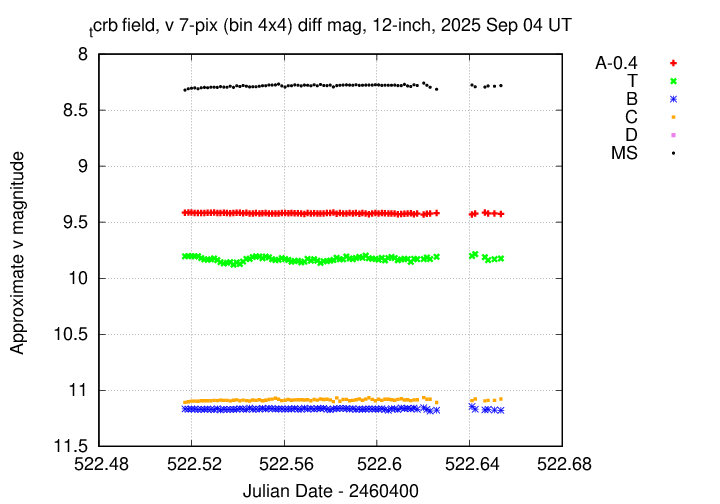
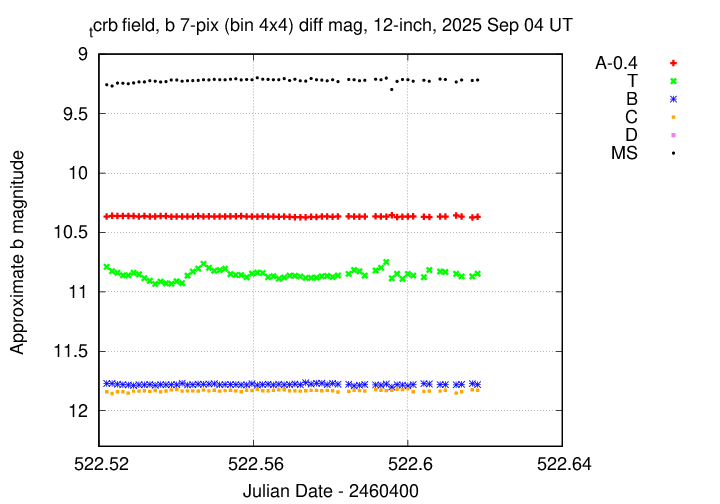
I've submitted these measurements to the AAVSO.
My very quick observations of HN Psc and V527 And were made with the same setup and exposure time as T Crb:
The results suggest that these exposure times should be fine; none of the obvious nearby comparison stars, nor the targets, are saturated. In fact, slightly longer exposure times might be a good idea, if we want to improve the precision.
I noted that when HN Psc is placed near the center of the field, at (788, 1084), there's a nice, bright, guidestar in the guider's field of view. It's considerably brighter than the star I used for T CrB, and so could probably work with a guide exposure time of less than 3 seconds, if desired.
I also took a series of images of each star with the Seestar S50 telescope, unit F52. I have not yet analyzed those images.